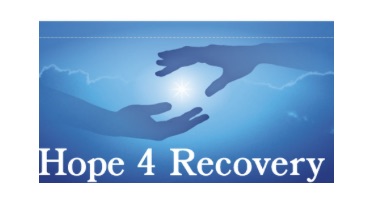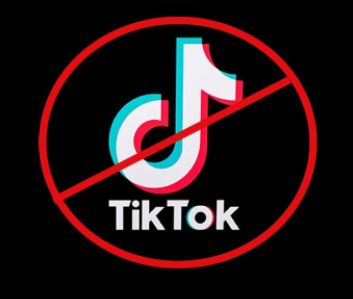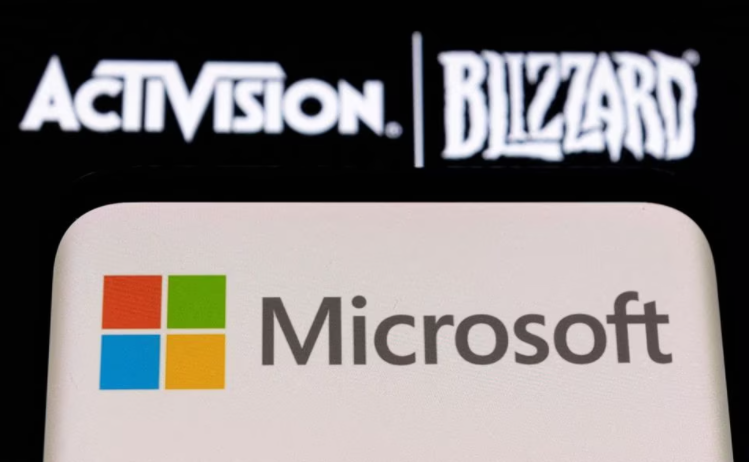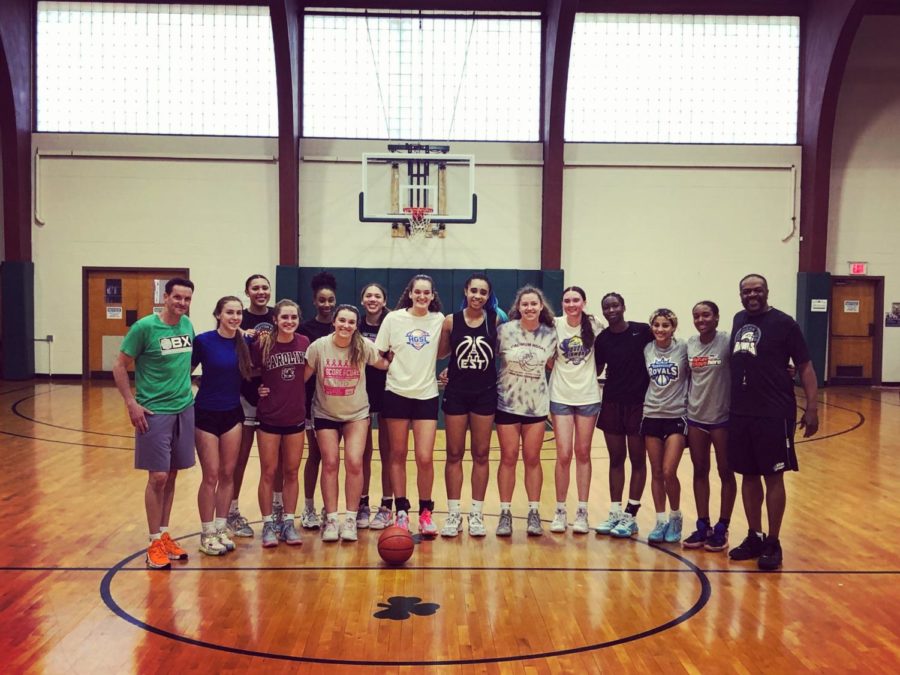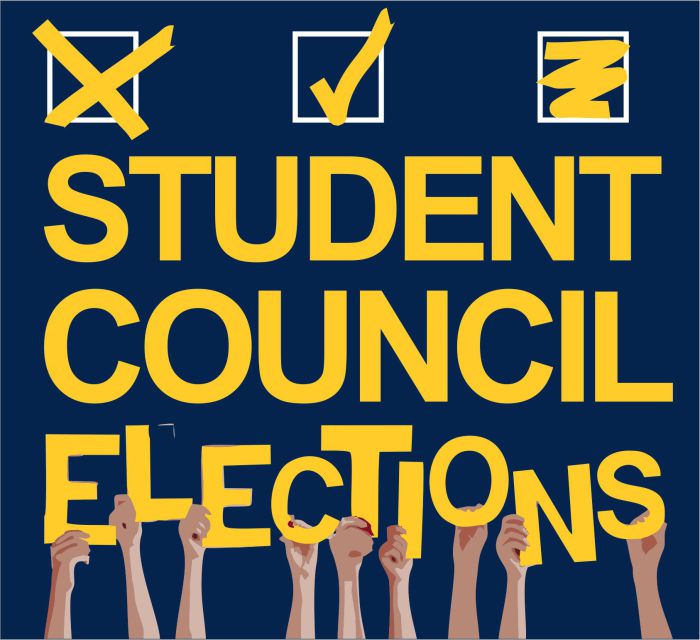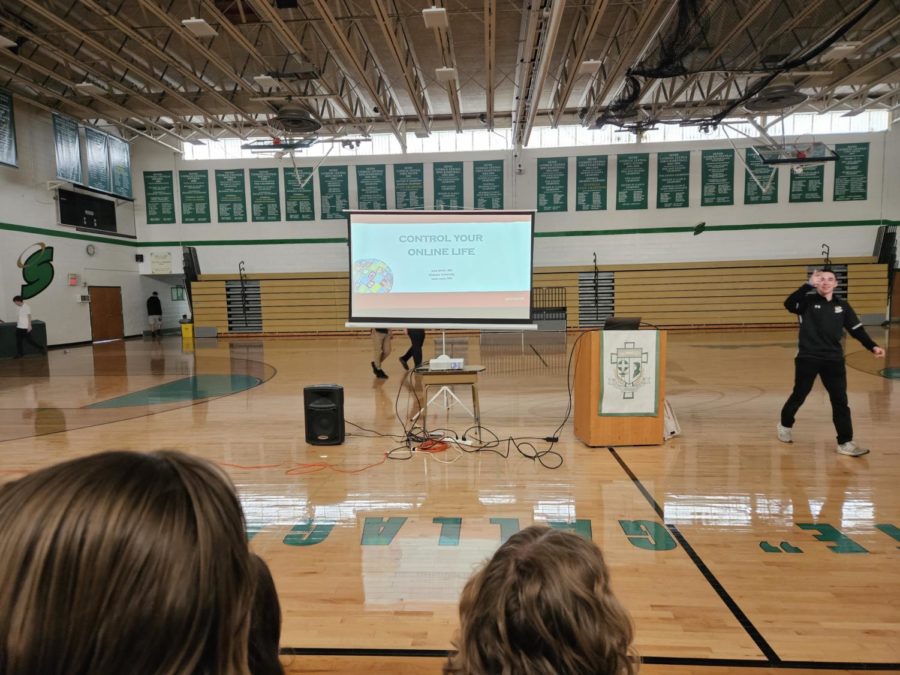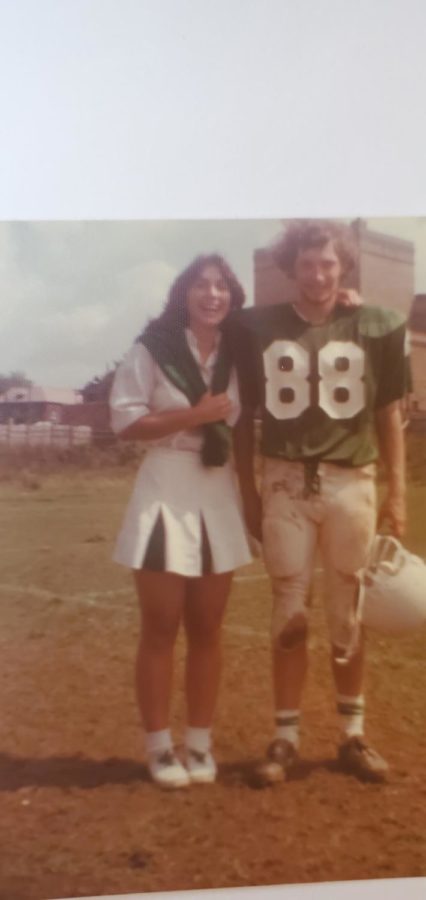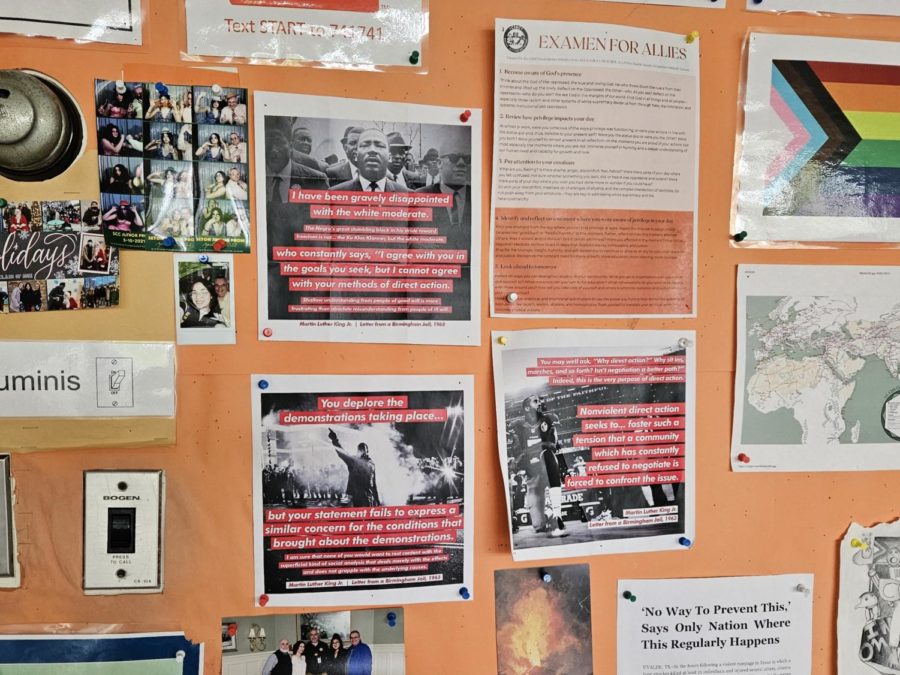Media Literacy Lecture
April 20, 2023
Seton welcomes its newest media literacy speaker right before spring break; what went differently, and what can students actually use?
Noses emotionally attached to screens, and the revolutionary adaptation of the thumb to a bite-sized keyboard are the advent of the 21st century. But aside from the art of memeology and the newest eccentric naming ceremony for a celebrity’s poor innocent newborn, an appetite for fake news has also grown prevalent among social media platforms. Only enhanced by the spring of the pandemic, the spread of disinformation has not only taken hold of modern politics, but has also strongly influenced how users absorb information. The day before spring break, Seton’s high schoolers were re-ushered into the whirlpool of media literacy with social media expert, Julie Smith.
Smith, an adjunct professor at Webster University who has been teaching media literacy at the university level since 1997, is a firm believer in the importance of digital citizenship education; or how she’s re-phrased it: digital wellness. Digital citizenship is basically the term for being “nice” online, but Smith says just being “nice” online isn’t enough. In her PowerPoint presentation, she outlines a strategic plan of 27 pointers for not only navigating social media safely, but for also better understanding media exposure in the 21st century, regardless of generational differences. Students have sat through these types of lectures before, and most don’t think they ever add anything remotely insightful about their use of social media platforms. To this, Smith offers a simple response. “It’s always good to hear some things many, many times. My hope is that out of the 27 things, there might have been one or two things they did not know.”
Smith approaches the world of social media the same way an English student is encouraged to approach any reading material: Critical thinking. “Ask questions about every message that [you] consume,” Smith says. In order to critically analyze the message and the purpose of the media you consume, she encourages users to entertain the following questions: 1) Who is delivering the message? 2) What is their motive and intent? 3) How is the message designed to get my attention? 4) What information is being left out? 5) Who is making money off of it?
As an introduction to her slideshow, Smith disclosed the primary motivation behind her lectures, being that social media, when it’s not being thrashed or spat on, is not often discussed through an educational lens. “If we’re spending this much time on something, why don’t we talk about it more than we do?” Smith says. Not only opening up social media for discussion, but for reflection is the first step towards becoming media literate, and with that Julie Smith begins her 27-step tourist guide for navigating social media. For the sake of brevity and relevancy, the following list is of a selected few, but the full guide will be posted at the end of this article.
Terms Of Service

One of the oldest, most practical ways to benefit from the uniformed is to make the information available visibly intimidating to obtain. Through presenting media education as overly complicated and obscure, social media companies can get users to agree to standards they wouldn’t even know existed if they didn’t drag themselves through their terms of service. “[Social media companies] don’t want us to read them,” Smith says. And here’s why.
Any application you might want to install has these ridiculously long and draining terms of service, which detail the legal agreements between a service provider and the user, that no one, besides clinically masochistic people, really reads. TikTok’s terms of service, for example, is about as long as the US Bill of Rights and longer than Hammurabi’s Code, Microsoft’s comes close to Shakespeare’s Macbeth at approximately 15,000 words. However, entering social media without a greater understanding of what exactly you’re getting into is almost equivalent to entering a crocodile infested swamp while blindfolded. Smith says that most users are virtually unaware of what they’re really agreeing to because of these media companies’ deliberate efforts to disguise themselves with their terms of service. During the lecture, she specifically highlights ownership clauses and content prohibition.
All the major social media companies, including Facebook, Instagram, Twitter, and YouTube, detail all the technological jargon dealing with content ownership and prohibition in, you guessed it, their terms of service. With regards to content ownership, in joining any of these platforms, users essentially sign over their copyright to any personal content. Your copyright is the immediately held ownership of anything you choose to display, distribute, or reproduce. How media companies get users to sign away that right is by glossing over the actual implications of giving away copyrights in their terms of service, and having users agree to grant these platforms “legal permissions.” These “legal permissions” are known as licenses, and they grant a special permit to companies through which they can exert ownership over your content without technically violating copyright law. But how social media companies have coined it is: “We do not claim ownership of your content, but you grant us a license to use it” (all of the social media companies previously listed share this use of vocabulary, but this was taken from Instagram’s “Terms of Use”).
Content management in social media has become both a politically polarized subject matter and an ethical discussion over the past few years. The political aspect of it boils down to drawing the line between hate speech and freedom of speech, and the ethical qualm holds content regulation up to a broader lens in questioning whether social media companies should censor their content, or whether or not they should be held accountable for what they choose not to censor. But without having to dive into such painstakingly long discussions about content management, Smith simply asks users to know what they’re agreeing to. Users’ accounts are subject to censorship and deletion if their content is against company terms and conditions, and whether or not regulation is religiously enforced across all social media platforms doesn’t undermine the fact that if you are censored, or if your account is deleted, you’ve basically signed away your defense.
Know the Power 5

Google, Twitter, YouTube, Amazon, and Facebook are the big wolves of media consumption. And unless you haven’t spotted the elephant amongst dainty white egrets, Amazon would be your culprit. On its way to becoming one of the biggest retailing stores in the world, Amazon is also treading alongside social media platforms in becoming a huge marketeer. How do social media platforms become a marketable business? By putting their hefty data collection up for bid. As previously mentioned, social media platforms exchange users’ information for external businesses’ financial support. Amazon has adopted a similar framework to its social media counterparts for that very reason: to drag more eyeballs, and wallets, onto their platform through interest-based content.
Follow the Money

Social media companies seek to profit, and like any company, they have a product; a product so immensely profitable and versatile that it has transcended the laws of simple demand and supply: you. You, the user, think and act like a client, consuming entertainment and in return giving your attention, but media entertainment in services such as Instagram, or TikTok are free, making the user the only thing left to sell. Therein lies the danger of social media. Your presence becomes so valuable that once platforms begin to vie for your time and attention, you yourself become the product being invested in. But how can social media platforms profit from your mere presence? Advertising.
Ads are the strongest financial pillar sustaining social media platforms. All the information you submit to the internet is tracked, and in turn, used. Tik Tok’s Privacy Policy, for example, states: We may collect information from and about you, including information that you provide, information from other sources, and automatically collected information. This information is not only fed to a user’s profile, but also to external investors that want to know what kind of content users like, what they spend most of their time on, and what piques their interest. Businesses will then use this data collection, permission duly given, to further their marketing efforts within social media and hook potential customers. Platforms like Facebook will give external backers purely content-based, and demographic information about their users, but others, like Tik Tok, will not refrain from giving users’ personal intel (possibly to the Chinese Communist Party).
Smith’s lecture didn’t function as a red flagging ceremony to condemn social media, but rather as a healthy reminder that social media companies seek to profit (from us).
It Is Not All Terrible
A recurrent theme in previous media literacy lectures has been to deem social media an evil force that has taken hold of modern teenagers. Smith aims to break away from this pattern of condemning social media for some of its negative side effects, seeing as she understands lack of education to be what really tilts users in the wrong direction, not the media itself. “It’s a tool… it depends on how you use it,” she says.
Know the Law
Unlike individual terms of service, in which a violation might result in the permanent deletion of your account, the state takes your presence online into a court of law. When promoting social media education, it is impossible not to discuss moral issues, or ethical guidelines for surfing online, but the media can often feel like a black hole, disconnected from reality; it is easy to forget that users are legally responsible for what is uploaded and distributed, especially if it’s deemed inappropriate, or obscene. Among younger audiences, this mostly applies to sexual content. As Smith put forth, New York State, under Article 235 of its penal code, sentences any possession or promotion, implicating both the promoter and the producer, of a photo containing sexual content as a Class D misdemeanor, and deems the posting of such content a Class D felony. Dialed down: New York State Law prosecutes the producer, possessor, and distributor of sexual content on social media. Additionally, “revenge porn,” a term associated with the non-consensual possession/publication of intimate, sexual content of a person, whom the offending party wishes to harm, is also prosecuted under New York State Law. For more explicit information, click here.
Even if social media companies have a so-called “zero-tolerance” policy for child pornography (or more accurately dubbed child sex abuse material), it continues to spread like wildfire. According to the National Center for Missing and Exploited Children (NCMEC), monthly reports of such material doubled from about 1 million in March 2019 to 2 million a year later. Reports increased by an additional 35% from 2020 to 2021.
Ways to Cleanse
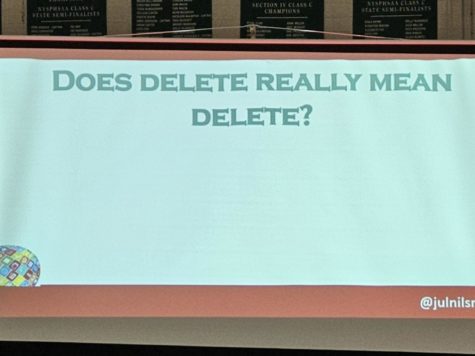
Does delete really mean delete? Unfortunately, the first delete option is never permanent, or even the least bit cleansing. For example, Instagram, besides the arduous process of deleting itself, keeps your account and content intact and active for up to 30 days after you decide to delete it. And even if your account is deleted, your uploaded content has several layers of warranty that makes it virtually impossible to permanently delete anything. If users are set on permanently deleting their account on any social media platforms, it is never by taking the easy shortcut.
Also, once you upload content, it may seem lost in social media’s maelstrom of distribution, but there are ways to retrieve your content after it has been spread. Smith put up several resources on her slideshow, but the most highly recommended, explicitly for nude photos, was Take It Down, an organization dedicated to helping minors “remove or stop the online sharing of nude, partially nude, or sexually explicit images or videos taken of you when you were under 18 years old.” For more information, click here.
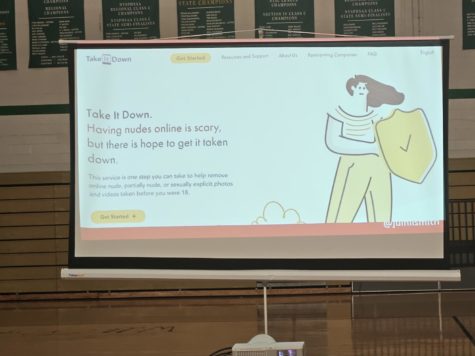
Designed to be Addictive
When the main artery for profit is your attention, media companies prioritize the art of the hook and draw. Much like how video games are constructed, forgive the corny fishing allegory, social media lays down the bait to keep the user enthralled in their doom scrolling. For video games, as Smith explained, developers employ two incredibly effective strategies to maintain engagement: the interest curve and the “loose by a little” strategy. The interest curve should be ubiquitously familiar to any gamer whose level hopping has become an obsession. It is the term for literally making each new level different, or harder, thereby luring you curious minnows into completely uncharted, yet thrilling waters. The “loose by a little” paradigm is an equally prolific, but often undiagnosed trick to dilute the consequences, or the impact of losing in order not to discourage gamers; to make them try again and again. And although it may seem far-fetched to compare gaming addiction to the allure of social media, these methods have been incorporated into social media platforms. One of the most lucrative tactics to keep users scrolling is the short video format. It has gained prominence on platforms like TikTok and Instagram, and is designed to appeal to the short attention span of the average media consumer; to entice the viewer in such an easy, and accessible way to consume media.
Follow the Research
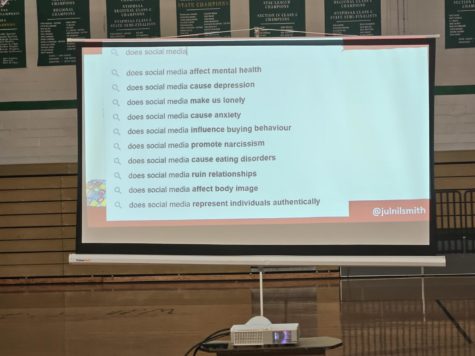
Social media education is most often presented through the lens of mental health. However, even though social media has had a colossal effect on users’ mental health and social habits, it stiffens the conversation pertaining to the effects of social media within the context of anxiety or depression. As Smith suggests, users should be up to date with the developing research about the effects of social media on not only mental health, but a myriad of other social spheres of influence.
Connect with Experts
For departing seniors, connecting with your aspirational vocation, or profession before going off into the ether (otherwise known as early adulthood), can further users’ interest, satisfy any doubts or inquiries, and even help motivated individuals get ahead of the game by developing professional profiles.
Find Your People
Social media not only opens a world of opportunities for its users, but also a world of interconnectedness and communication. No matter where your interests lie, there is always a little media burg to join, and/or create. Many active social media users have monetized their interests in creating community accounts, such as Youtube channels with a specialized focus in entertainment, education, mental health, or really anything that garners enough viewership.
Press Pause

Things can be taken out of context, especially on social media. The infamous “Selfie in the Auschwitz Concentration Camp” posted in 2014, besides what the general consensus might assume, wasn’t ill-intentioned. Yes, you would think smiling in front of one of the major camps for mass atrocity during World War II, and then tagging along a blushing smiley face at the end would definitely incite outrage, which boy oh boy it did, but the background story tells a different tale. As Smith explained, the girl in the picture, Breanna Mitchell, initially wanted to go to Auschwitz with her father, with whom she shared a historical fascination with World War II, but who, unfortunately, had died a year prior to the photo. It was clearly an emotional moment that Breanna wanted to share, but its delivery, bereft of enough context, ruined the sentiment and turned the real intention on its axis. This example, even if a little outdated, received a similar reaction when broadcasted in front of bleachers filled with Seton’s high schoolers, which served to show how quickly content can be misinterpreted, and to this Smith hammered on the importance of “the pause.” A short, effortless introspection as to why you are uploading content, and a step into the stranger’s perspective: how is it going to be received?
Use Your Agency
One of the most easily accessible how-to’s in media safety is privatizing accounts. When users make their accounts private on Instagram, for example, they control who follows them, making a lot of things easier to control. However, there are other methods that do not require users to fully commit themselves to a private account. Smith says that the online experience is up to the individual, therefore, knowing your settings, your options gives any user the power to choose how to experience social media. To list some of her suggestions, users can mute and block others, erase the option to comment from their uploads, and limit how much time they spend online.
Know Section 230
Being familiar with Section 230 ties in with users being at least peripherally aware of the law surrounding their involvement in social media. Section 230, being the timid stepfather for the modern social media company, did not only give rise to social media as we know it today, but also entrenched its ruling companies within a legal immunity that verges on the divine. Contained within the 1996 Communications Decency Act, Section 230 protects social media companies from liability for users’ posts and for any claims for moderating content. Meaning that social media companies are not held legally accountable for what their users post and what they choose to censor.
Verify Photos / News
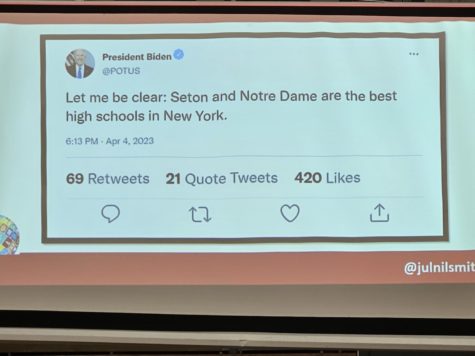
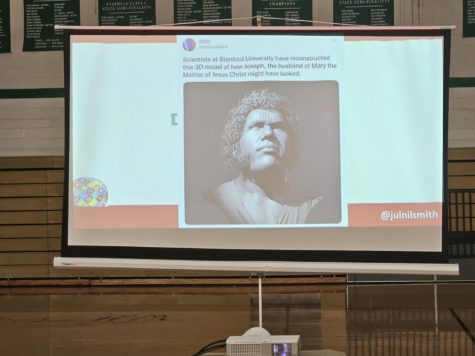
Especially when following up on newsworthy events, it is imperative that the casual viewer is not taken away by seemingly “legit” news headlines and stories. It is exaggeratedly easy to upload unverified news stories, photoshopped and misleading photos, or headlines, and it is even easier to get swept up by the spread of disinformation. By attaching a seemingly reliable source to an otherwise false news story, the spread of disinformation is emboldened and legitimized.
Spot Fake Accounts

Fake accounts aim to disarm, to get users to trust their legitimacy. Whether it be the trusted face of a distinguished US general, or a “hot” doctor, all fake accounts have common, distinguishable features that help, for lack of better imagery, nail them to the wall. For spotting fake accounts, make sure to look for the following: 1) a large series of numbers after the account name 2) bad grammar, or spelling in the description 3) or a military background, or government position. Besides being aware of what makes an account questionable, Smith suggests using the reverse image search feature on an account’s profile pictures as well.
Watch for Smishing

Smishing, a clever world play for “fishing by text,” is every overly polite respondent’s worst fear. These text spawns depend on your internet nicety in responding to an unknown number or ad. However, once the text message warrants a response, and verifies that there is a human on the receiving end, the unknown source will proceed to try and pressure you for personal information. The advice? Simply delete them and do not respond at all.
Where Do You Fit?
To conclude her slideshow, Smith posed the question any media user should be asking themselves: where do you fit? In the media spectrum, users fall within many categories based on their interests and involvement, but the online experience is determined by how the individual user navigates social media either irresponsibly, or consciously.
Students have often voiced their main issues in attending media literacy lectures and the inability for these talks to say anything new. However, students’ frustration doesn’t seem to stem from these lectures’ repetitiveness, but rather their uselessness. After the media lecture, among others huddled in a circle in Mr. Lucia’s lounge, sophomore Peyton Force commented that most of the advice provided by the lecture was a “no brainer,” and she’s not the only one to have voiced similar criticism. After all, they are the so called “children of the digital age”, aren’t they?
So, are Peyton and her classmates experts adroit at navigating the pitfalls of digital life? Or are students simply overconfident in their own social media skills? Are they well past the basics or did the speaker’s finer points elude them in those last 90 minutes before spring break? Lectures in general will usually leave students feeling drained, and despite the best efforts of the teacher, uninspired. And although there is much room for praise with this year’s media literacy lecture and its speaker, compared to previous years, many students questioned whether they would be able to make good use of the lessons in digital wellness. Perhaps this year’s talk could prove to be different if students end up benefiting from even some of the points for digital wellness. Perhaps they will grow more critical with the media they consume or how they consume it. Maybe they won’t fall victim to the next scam. Hopefully they will know where to turn for help. With any luck, they will now seek out new online communities and professional opportunities. Only time will tell.
Full 27-step guide:
- Terms of Service
- Follow the Money
- It’s Not All Terrible
- Know The Law
- Designed to be Addictive
- Follow Research
- Catch the Fakes
- Connect with Experts
- Find Your People
- Verify Photos and Profile Pics
- Recognize Artificial Intelligence
- Press Pause
- Be on LinkedIn
- Train the Algorithms
- Know the Power 5
- Use Your Agency
- Know Section 230
- Spot the Fake Accounts
- Use Full Sentences as Passwords
- Do You Self-Track?
- Watch for Smishing
- Do You Set Boundaries
- Ways To Cleanse
- Do You Protect Your Stuff?
- Careful with “News”
- Use It for Good
- Know Where You Fit



![College of Community and Public Affairs graduates cheering during the CCPA Commencement Ceremony. [Via Daily Photos at binghamton.edu]](https://sccvoice.org/wp-content/uploads/2023/05/Screenshot-2023-05-16-10.50.55-PM.png)

